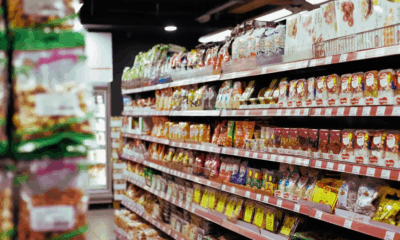Business
Is the Luxury Sector in Pain? A Deep Dive
The luxury sector, long considered recession-proof, is facing significant challenges in 2024. Recent data and industry reports reveal a slowdown in the growth of some of the world’s most prestigious brands. A closer look at the latest financial results from LVMH Moet Hennessy Louis Vuitton SE, the largest luxury conglomerate, sheds light on this evolving landscape.

Decline in Champagne Sales and Lower Than Expected Growth
One of the most telling signs of the luxury sector’s struggles is the decline in champagne sales, as noted by LVMH. As global uncertainties rise, consumers are rethinking their spending on high-end products, including champagne. LVMH reported only a 1% increase in sales, excluding currency movements and mergers, in the fiscal second quarter. This growth rate is the lowest since 2009, excluding the pandemic period, and falls short of analysts’ expectations of a 2.89% gain.
Fashion and Leather Goods: Slower Growth
Fashion and leather goods, the cornerstone of LVMH’s portfolio, also saw a modest 1% rise in sales for the three months ending June 30. This figure is about half of what analysts had anticipated, causing LVMH’s shares to drop by as much as 6.5%. The operating margin for the first half of the year fell to 25.6% from 27.4%, highlighting the financial pressures on the company.
Shifts in Consumer Behavior: The China-Japan Dynamic
A significant factor contributing to this downturn is the shift in Chinese consumer behavior. Chinese shoppers, once a major driver of luxury sales, are now spending more cautiously amid a property market slowdown. Interestingly, there has been a “violent” shift towards shopping in Japan, where a weak yen has made luxury goods more affordable. This migration of spending is putting additional pressure on luxury brands to adapt to changing market dynamics.

US Market Challenges
In the United States, middle-class consumers are grappling with inflation and higher borrowing costs, leading to reduced spending on luxury items. This trend is particularly challenging for brands like Tiffany, which LVMH is trying to elevate in the market. Despite these efforts, the economic pressures are proving difficult to overcome.
Winners and Losers: Brand Strength Matters
While the luxury sector as a whole is experiencing a downturn, not all brands are affected equally. LVMH’s brands like Louis Vuitton and Loewe are performing relatively well, especially in China. However, the group’s exposure to wines and spirits, particularly champagne, has resulted in a “severe demand issue.” In contrast, Italian luxury brand Brunello Cucinelli SpA and French fashion house Hermes International SCA are showing resilience, with expectations of solid sales growth.
Challenges for Middle-Class Oriented Brands
Brands targeting the middle-class luxury segment are particularly vulnerable. Burberry Group Plc has warned of potential losses and has taken drastic measures, including suspending its dividend and parting ways with its CEO. Kering SA’s Gucci brand is also struggling, with a significant drop in organic sales in the first quarter. These brands are facing the dual challenges of economic pressure on their target consumers and the need for successful brand turnarounds.
Bright Spots in the Industry
Despite the overall challenges, there are bright spots within the luxury sector. Jewelry brands such as Cartier and Van Cleef & Arpels, under Cie Financiere Richemont SA, are currently enjoying high desirability. Prada SpA is also expected to perform well, with its namesake brand maintaining its cool factor and Miu Miu gaining popularity.
Future Outlook: Recovery Delayed but Not Impossible
Looking ahead, the luxury sector may see some relief as comparisons become easier in the latter half of the year, given the high base effects from 2023. LVMH reported an improvement in demand from US consumers in the second quarter, especially for fashion and leather goods and cognac. However, Chinese consumer demand has softened slightly.
A meaningful recovery for the luxury sector is not expected until at least 2025. Nevertheless, in the long term, rising incomes worldwide are likely to benefit the top end of the market. LVMH, with its strong market position, is poised to capture a significant share of these gains when the market conditions improve.
The luxury sector is undoubtedly in a period of transition, grappling with economic pressures and shifting consumer behaviors. While the pain is palpable, particularly for brands reliant on middle-class consumers and those undergoing brand turnarounds, the sector’s long-term prospects remain promising. Brands that can adapt to these changes and maintain their desirability will emerge stronger when the global economy stabilizes. Until then, luxury brands may need to brace for a challenging period, with cautious optimism for the future.



































